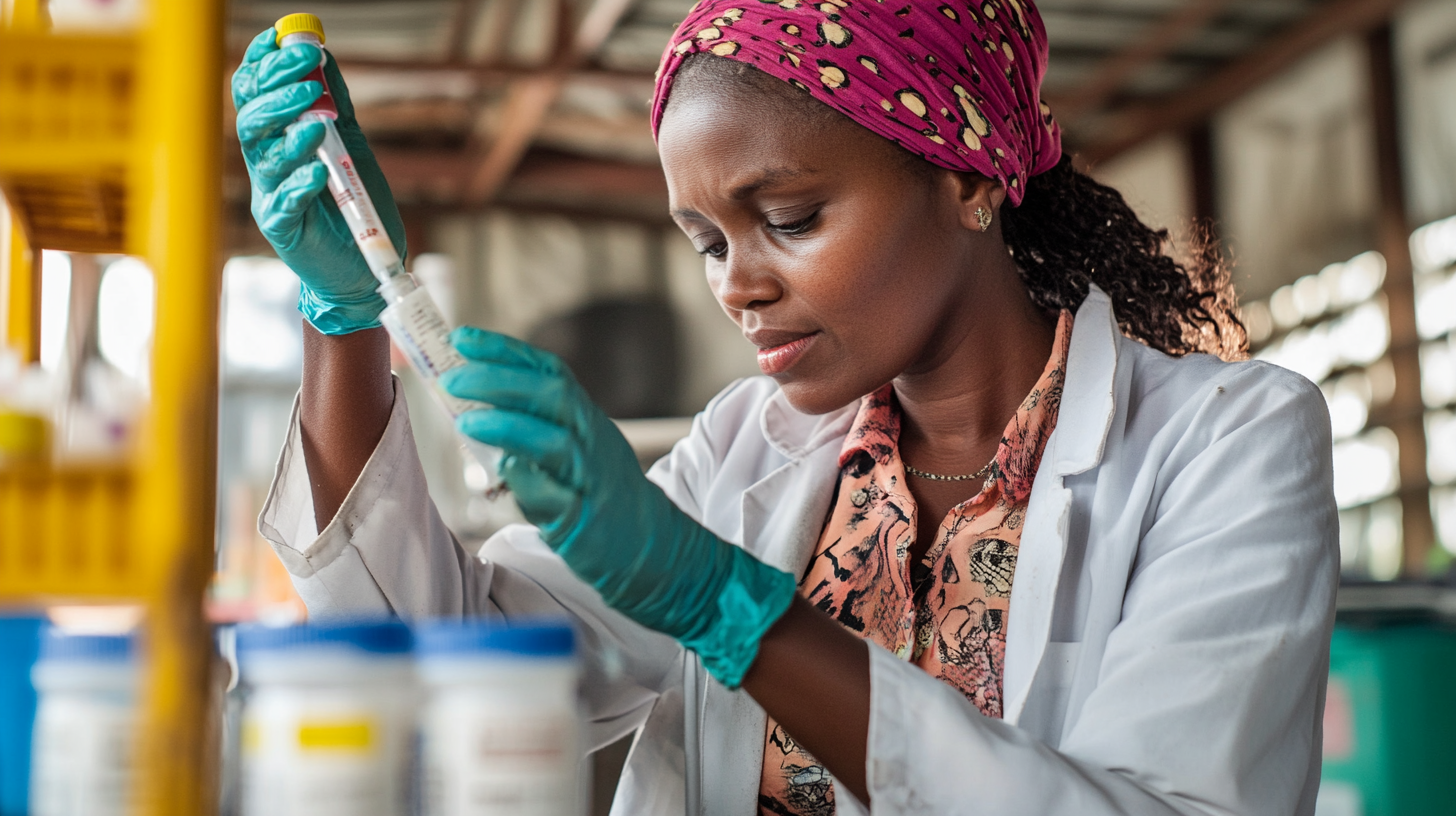Unlocking Solutions: How Yeast Infections Impact Global Health and Trade Opportunities
Yeast infections, caused primarily by Candida species, represent a significant public health concern worldwide, affecting millions of individuals and leading to substantial economic implications. According to a report by the World Health Organization, candidiasis represents one of the most common fungal infections globally, with estimates suggesting that it affects approximately 75% of women at least once in their lifetime. Moreover, the economic burden of yeast infections is profound; the global market for antifungal drugs alone is projected to reach around $16.5 billion by 2027, driven by rising incidences of fungal infections and the growth of the pharmaceutical industry. These infections not only impact the health and well-being of individuals but also influence global trade opportunities in pharmaceuticals, healthcare services, and raw materials necessary for treatment. Understanding the multifaceted effects of yeast infections is crucial for stakeholders aiming to enhance health outcomes and leverage trade advancements in this critical area of public health.

The Global Burden of Yeast Infections: Current Statistics and Trends
Yeast infections, particularly those caused by Candida species, represent a significant and growing public health challenge globally. Current statistics indicate that around 75% of women will experience at least one yeast infection in their lifetime, with many suffering recurrent episodes. The prevalence is not limited to women; men and individuals with compromised immune systems are also at risk. Notably, the World Health Organization has recognized the increasing incidence of invasive candidiasis, especially in healthcare settings, highlighting the need for better surveillance and treatment options.
Trends reveal a rising global burden of yeast infections attributed to factors such as antibiotic misuse, which disrupts normal flora, and the increasing number of individuals living with conditions like diabetes and HIV/AIDS. The economic implications are substantial, as these infections contribute to increased healthcare costs and loss of productivity. Furthermore, they pose challenges to trade opportunities, particularly in the agriculture and food sectors, where yeast-related spoilage can impact product quality and safety. Addressing these issues is crucial for improving public health and invigorating economic growth in affected regions.

Economic Impact of Yeast Infections on Global Trade and Healthcare Systems
Yeast infections, particularly Candida auris, are emerging as a significant public health concern that not only affects individual health but also has broader implications for global trade and healthcare systems. According to the World Health Organization, Candida auris is responsible for high mortality rates, with studies indicating up to 60% mortality in some cases. This rising threat places additional strains on healthcare resources, necessitating increased investment in diagnostics, treatment, and infection control. As hospitals grapple with these infections, there are rising costs associated with extended hospital stays and more intensive care facilities, which are expected to increase healthcare expenditure by approximately 15-20% in countries facing outbreaks.
The economic repercussions extend beyond healthcare systems; they also impact international trade. The Centers for Disease Control and Prevention (CDC) report that fungal infections like yeast infections lead to an estimated annual cost of $3 billion in the U.S. alone. This burden is compounded by disruption in the workforce due to illness and the associated costs of sick leave. Furthermore, industries relying on sterile environments, such as pharmaceuticals and food production, face increased regulatory scrutiny and potential trade barriers. As such, yeast infections are not merely a health issue but a significant factor influencing economic stability and trade opportunities on a global scale.

Exploring the Link Between Yeast Infections and Antibiotic Resistance
Antibiotic resistance is an increasingly critical public health challenge, with yeast infections emerging as a significant factor in this complex issue. As the overuse of antibiotics continues to contribute to resistance, certain species of yeast have adapted, complicating treatment options. The widespread use of antifungal agents, often without proper diagnosis, has led to resistant strains that can exacerbate existing infections, prolong suffering, and result in higher healthcare costs.
The connection between yeast infections and antibiotic resistance also has far-reaching implications for global trade and health. As countries grapple with rising cases of resistant infections, the trade of agricultural products treated with antifungals becomes a concern. Increased restrictions on these products may arise as nations prioritize public health, potentially disrupting markets. Furthermore, as healthcare systems face the dual challenge of treating resistant infections and managing the economic impacts, the need for coordinated global strategies becomes ever more pressing. Addressing the nexus of yeast infections and antibiotic resistance is not merely a clinical challenge; it is a pivotal issue that affects global health systems and economic sustainability.
Impact of Yeast Infections and Antibiotic Resistance on Global Health
This chart illustrates the increasing trend of yeast infections and antibiotic resistance cases from 2019 to 2023. It highlights the significant impact these health issues have on global health and trade opportunities.
Innovative Solutions and Research Advances in Yeast Infection Prevention
Yeast infections, often overlooked in discussions about global health, pose significant challenges that necessitate innovative solutions. Recent research advances have shifted focus toward preventative measures that can markedly reduce the prevalence of these infections. For instance, breakthroughs in probiotic treatments have demonstrated efficacy in restoring the natural balance of flora within the human body, thereby minimizing the risks associated with yeast overgrowth. Additionally, the development of antifungal clothing, which incorporates antimicrobial fabrics, presents a promising frontier in preventing external factors that trigger infections.
The intersection of health and trade opportunities becomes particularly relevant as the demand for effective yeast infection prevention strategies grows worldwide. Manufacturers are exploring the potential of bio-based products that not only cater to this need but also align with sustainable practices. By investing in R&D for innovative treatments and preventive measures, industries can tap into a burgeoning market while contributing to the global health narrative. As awareness increases, the integration of these inventive solutions promises to enhance both individual well-being and economic prospects across nations.
Impact of Yeast Infections on Global Health
This pie chart illustrates the distribution of various impacts of yeast infections on global health and trade opportunities. The data represents the percentage contribution of each impact factor to the overall burden of yeast infections worldwide.
Global Health Policies: Addressing the Challenge of Yeast Infections Effectively
Yeast infections represent a significant public health concern worldwide, with their implications extending beyond individual health to global economic and trade opportunities. Data from various health reports indicate that fungal infections affect over 1 billion people globally, leading to approximately 11.5 million life-threatening infections each year. The burden of antimicrobial resistance (AMR), especially in the context of fungal pathogens, complicates treatment strategies. Recent analyses suggest that AMR poses one of the top health development threats globally, with bacterial AMR being responsible for considerable morbidity and mortality.
The challenge lies not only in managing current infections but in strengthening global health policies aimed at enhancing fungal diagnostic capabilities and treatments. The absence of FDA-approved fungal vaccines underscores the need for innovative research and development. Experts emphasize three key pillars for effectively addressing AMR: improving infection prevention measures, bolstering global surveillance systems, and fostering international collaborations for better fungal disease management. This integrated approach will be vital to reducing the public health impact of yeast infections and enhancing economic resilience in the face of rising antimicrobial resistance.
Unlocking Solutions: How Yeast Infections Impact Global Health and Trade Opportunities
| Country | Incidence Rate | Economic Impact (USD) | Trade Opportunities | Health Policy Initiatives |
|---|---|---|---|---|
| USA | 1.3 million cases/year | 3 billion | Probiotics and Antifungal Products | Increased funding for research |
| India | 800,000 cases/year | 1.5 billion | Herbal Remedies and OTC Products | Public awareness campaigns |
| Brazil | 600,000 cases/year | 1 billion | Natural Antifungals | Strengthening healthcare infrastructure |
| Germany | 400,000 cases/year | 800 million | Innovative Treatment Solutions | Research collaboration |
| China | 1 million cases/year | 2 billion | Medical Devices for Treatment | Policy reforms for easier access to treatment |
